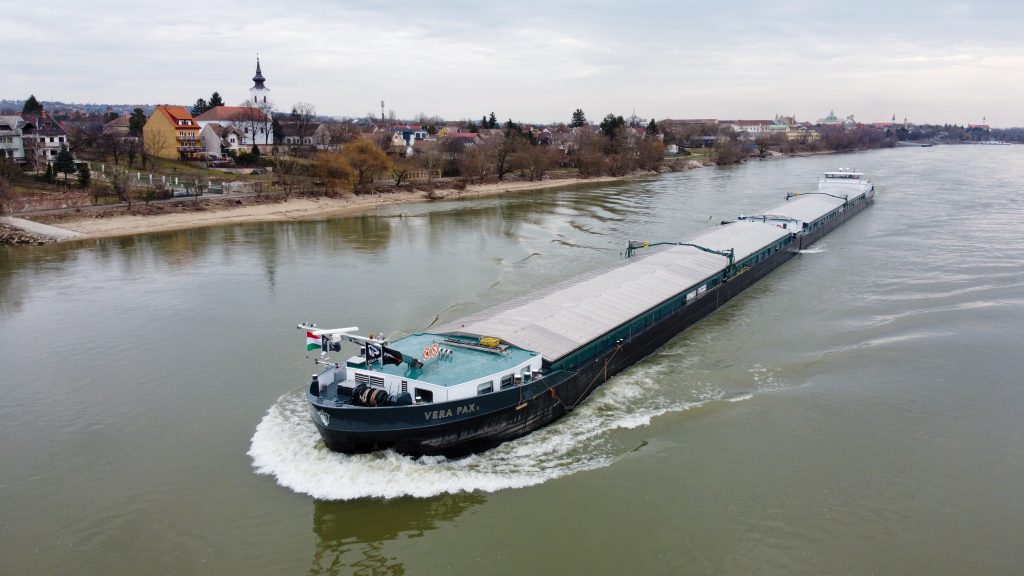Belgian Client Case: Vera Pax
Fabian de Wachter is the captain and owner of the Vera Pax, a vessel measuring 183 meters in length and 11.45 meters in width, with a carrying capacity of over 5,500 tons. The Vera Pax is part of a fleet of four vessels and sails across vast regions, from the North Sea to the Black Sea. As an experienced skipper, Fabian navigates with his push convoys, focusing on the transport of grain and other dry bulk goods.

Fabian reflects on the moment he first came into contact with Shipping Technology. “That must have been around 2020, when I met Remco (Founding Partner of Shipping Technology). The way he approached it, drawing from his own experience as a skipper, and how Shipping Technology started experimenting, immediately gave me the feeling that this was the right long-term approach.”
The choice for Shipping Technology, and specifically for the ST BRAIN, was a logical step for him. “I found it very interesting. They first started developing the ST BRAIN, and afterwards we were among the first to experiment with the Autonomous Lane Assist (ALA) in 2022. But especially today, with the ST BRAIN helping us record incidents and collisions, I truly see it as a reassurance.”
On using the ST Dashboard, Fabian explains: “For me, it’s not necessary to constantly dive into the dashboard.” Still, he acknowledges the potential of the ST BRAIN with a growing fleet: “When you’re managing an entire fleet, it naturally becomes more interesting. And when working with external crew, it’s quite useful to look back. What were the conditions, how hard were the engines running compared to the speed, and so on.”
He adds about the usefulness of the ST BRAIN in emergencies: “It is essential to be able to record collisions and similar incidents. During a nighttime collision that initially went unnoticed by us, we were able to track down the culprit afterwards thanks to the ST BRAIN.”

Fabian explains how the ALA is used on board. “It brings peace of mind,” he notes, reflecting on the vast regions they navigate — from the Rhine to the Danube, from simple to complex routes. “On the easy stretches, the ALA provides a sense of reassurance, while on the more challenging stretches I still prefer to sail myself and take control, simply because I enjoy it.” However, he also acknowledges the risks of human inattention. “We see more accidents happening on the easy stretches. Accidents often occur when you least expect them, when alertness drops. That’s where the ALA helps, taking over for a moment when needed.”
Fabian has a clear opinion on the future vision of autonomous sailing. “Fully autonomous sailing — I don’t see that happening anytime soon. Tools like the Autonomous Lane Assist are exactly that: tools that make sailing easier,” he explains. Fabian views these technologies as additions that provide peace of mind and comfort, but he warns that they should never replace the essential knowledge and skills of the skipper.
In a world where computers are becoming increasingly intelligent, he emphasizes the need to cherish the art of sailing. “Sailing remains a craft,” Fabian says. “At some point, computers will truly become smarter than we are, and a great deal of knowledge will eventually be lost. Navigating through flowing rivers, maneuvering a vessel through a lock, mooring a ship — that remains a craft. But we must be careful that technology doesn’t cause us to lose our profession.” For Fabian, the real challenge lies in finding a balance where technology supports craftsmanship without overwhelming it.
He concludes with a powerful statement: “Craftsmanship cannot exist without technology, but technology certainly cannot exist without craftsmanship. And that’s where we need to find the right balance.”

